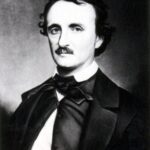Time: 47 minutes (one class period) Setting: Classroom (desks in a horseshoe shape to enable/encourage class discussion) Objective: After this lesson, students should be able to identify the following literary devices: alliteration, simile, metaphor, personification, and onomatopoeia Background: Students have spent the last two weeks studying the elements of poetry. Usually, we have focused on one literary device per poem. The Highwayman,” however, has a multitude of literary devices at its disposal. Today is the final day we will spend on literary devices. Next week, we will apply the tenets of “New Criticism” to poems. Finally, students will synthesize what they have learned into a 15 minute presentation on poems of their choosing. Presentations must address both literary devices and “New Criticism” Materials: Handout of “The Highwayman” (students received this yesterday), link to Loreena McKennitt’s “The Highwayman,” functional computer speakers, butcher/chart paper, and markers
Preparation:
1. Have website with recording (http://www.ece.ubc.ca/~turgay/mp3/loreena%20mckennitt%20-%20the%20highwayman.mp3) pulled up on computer
2. Have butcher/chart paper and markers
Procedure:
1. When the bell rings, ask students to take out their copies of “The Highwayman.”
2. Instruct students to listen carefully to the Loreena McKennit version of the poem. She has left out three stanzas. Ask students to mark those stanzas that are skipped.
3. Listen and enjoy!
4. When the song ends, ask students to identify the three missing stanzas
a. Ask if they feel that these stanzas were necessary to the understanding of the story.
b. Ask why they think McKennitt excluded them.
5. Count students off by fives.
6. Designate areas for each of the groups to sit, and ask them to take the copies of their poems to their groups.
7. Give each group a literary device on which to focus: alliteration, simile, metaphor, personification, or onomatopoeia.
8. Instruct each group to find examples from the poem of their literary device. These examples should be neatly written on the sheet of butcher/chart paper. Inform them that they will present briefly at the end of the period.
9. Circulate as the groups begin to look for literary devices in the poem. Answer any questions and offer suggestions when necessary.
10. When it looks like the groups are beginning to wind down, give them two minutes to wrap things up and write any final examples on their butcher/chart paper.
11. Ask the “Alliteration Group” to begin presentations. After they have listed some of their examples, ask the following questions:
a. How do the words “cobbles,” “clattered,” and “clashed” create a sound effect for the action that is taking place? What do you think Noyes used “noisy words” at this point in the poem?
12. Ask the “Metaphor Group” to go next. After they have listed some of their examples, ask the following question:
a. What mood is Noyes trying to set when he uses the metaphors “wind was a torrent of darkness,” “moon was a ghostly galleon,” and “road was a ribbon of moonlight”?
13. “Onomatopoeia Group” follows. After they have listed some of their examples, ask the following question:
a. Why does Noyes make a sound effect (tlot-tlot) rather than just telling us that the horse was galloping down the road?
14. “Personification Group” next. After they have listed some of their examples, ask the following question:
a. Why do the hours seem to “crawl” for Bess at this point in the story?
15. End with “Simile Group.” After they have listed some of their examples, ask the following questions:
a. What two things are being compared when the poem says that “her face was like a light? Why would Bess’s face be like a light as she stood listening for the Highwayman to arrive?
16. Hand out homework à Imagery in “The Highwayman.” Tell students to look at the pictures on the back of the worksheet. Each picture suggests a certain section of “The Highwayman.” Students need to choose a stanza that each picture represents and explain why they believe it fits that part of the poem.
Special Needs: To accommodate students with special needs, this poem has been presented for both visual and auditory learners. The use of grouping allows students to participate while not being singled out. While the students are working on the activity, I will walk around the classroom and clarify the directions for anyone who looks like they are struggling.
Assessment: Assessment will be based on participation. While I am circulating, if I am unable to ascertain from observation whether or not a student has learned anything, I may direct one of the comprehension questions toward that student during the presentations.
Illinois State English Language Arts Goals and Learning Standards
2.A.4a Analyze and evaluate the effective use of literary techniques (e.g., figurative language, allusion, dialogue, description, symbolism, word choice, dialect) in classic and contemporary literature representing a variety of forms and media. The students engage in an activity which asks them to identify the different types of literary techniques used in the poem.
2.B.4a Critique ideas and impressions generated by oral, visual, written and electronic materials. Students will respond to a recording of the poem. They will be asked to critique the performer’s choice to eliminate certain stanzas of the poem.
4.A.4a Apply listening skills as individuals and members of a group in a variety of settings (e.g., lectures, discussions, conversations, team projects, presentations, interviews). Students must listen to their group members’ ideas and suggestions when analyzing the poem for literary devices.
4.A.4b Apply listening skills in practical settings (e.g., classroom note taking, interpersonal conflict situations, giving and receiving directions, evaluating persuasive messages). Class should be attentive while other groups are presenting their findings. (After all, this will be on the test. )






